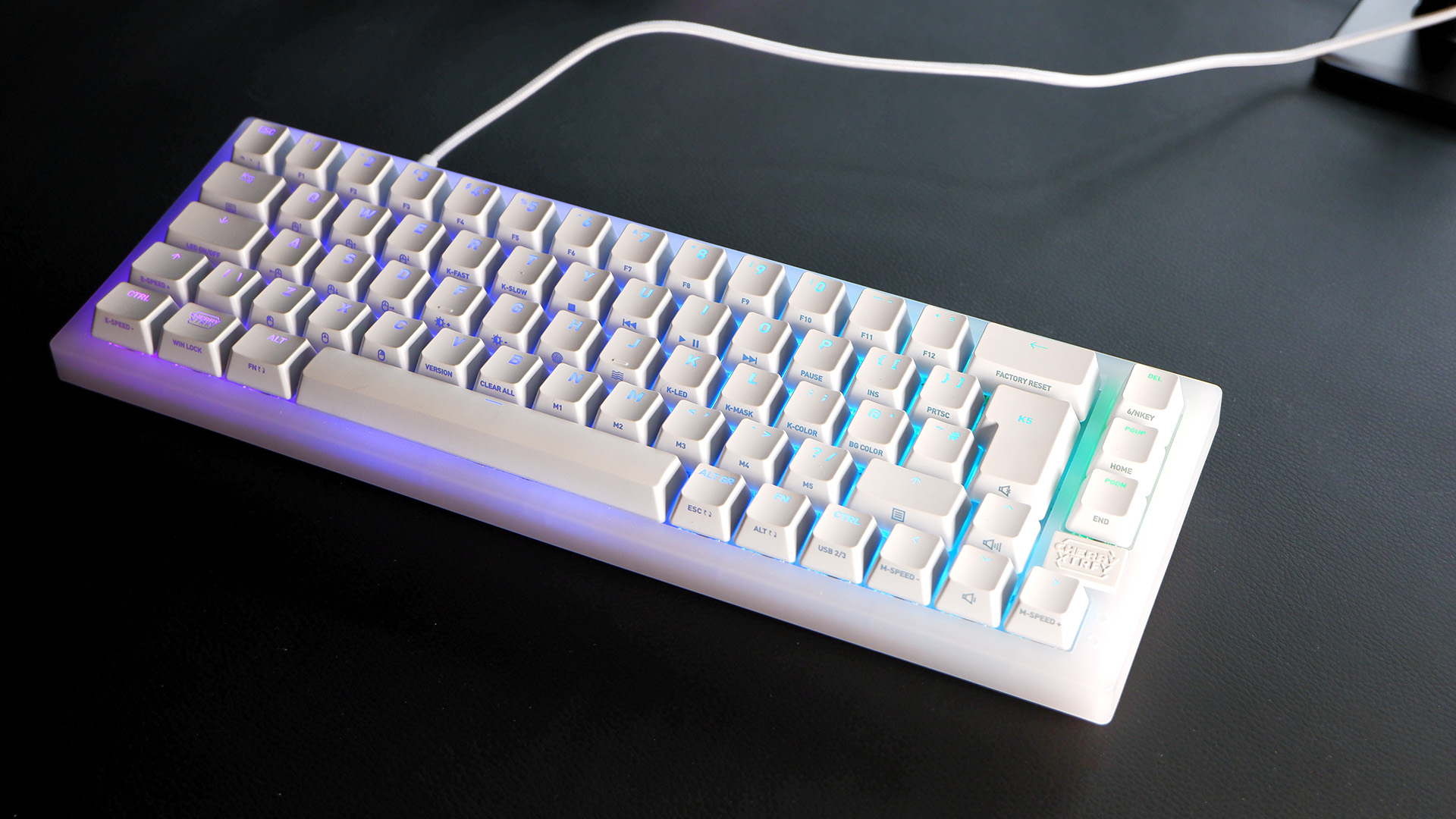Our Verdict
Cherry's new switch is a marked improvement over its extremely popular and widespread predecessor, and the Xtrfy K5V2 keyboard is a lavishly lit and sturdy home for them. Though there are nicer feeling, and cheaper, compact keyboards on the market. Nothing about the Xtrfy makes it sing for me.
For
- Steady switch
- Good typing experience
- Great for gaming
- Software free
- Hot-swappable
Against
- RGB lighting controls are finicky
- Cheaper wired compact boards available
PC Gamer's got your back
Cherry's switches are dependable, unwavering, and the standard by which many of us judge all other switches. So, what happens when Cherry changes them? You get the new MX2A Red switches inside the Cherry-made Xtrfy K5V2—a new and improved version of the Cherry MX Reds we've come to know well over the years.
The MX2A Reds are an improvement in a number of ways. First and foremost, they're factory lubed. If you're a regular reader of our keyboard coverage here at PC Gamer, you'll know that lube makes for smoother switches with a satisfying clack. That's certainly true of the MX2A Reds, too. Each key glides effortlessly with each strike from my fingers.
The MX2A switches come with "pin point ring lubrication" applied to the new 'socket dome' in the bottom housing. If that sounds like jargon, it sorta is, but in effect means each switch leaves the factory floor with a big dollop of grease in it, and which should stick around for the lifetime of the switch. For comparison to some original MX Reds, I've grabbed my Corsair K65 off the shelf. The MX2A switches in the Xtrfy lack the scratchiness and rattle that's noticeable on the admittedly ageing Corsair.
Other upgrades with the MX2A switches factor into the more consistent key press, including: a new barrel spring, housing socket dome, guidance ribs, and stem geometry. That last one is important, as the MX2A are significantly less wobbly than older MX Reds.
All of those changes make for a much smoother key press than with previous Cherry MX Red switches. I'd also say they're generally less clangey, though it's hard to put a value to how much of that is the new switch itself or the keycaps and stabilisers used on this exact Xtrfy model. Overall it's a much better switch than the original MX Reds. That's good news for gamers, as we're likely to see a lot of them end up in gaming keyboards from multiple brands.
But how does the typing experience on the Cherry Xtrfy K5V2 compare to our favourite keyboard of the moment, the ROG Strix Scope II 96 Wireless? To put it simply, I much prefer the Scope II 96 for typing. The lack of wobble in the PBT keycaps through the ROG NX Snow switches is as impressive now as the day I first tried it. Considering the feel of the last-generation Cherry MX Reds and a few other keyboards I have close to hand, however, the snappy and lightweight keypress of the Cherry remains pretty darn good overall.
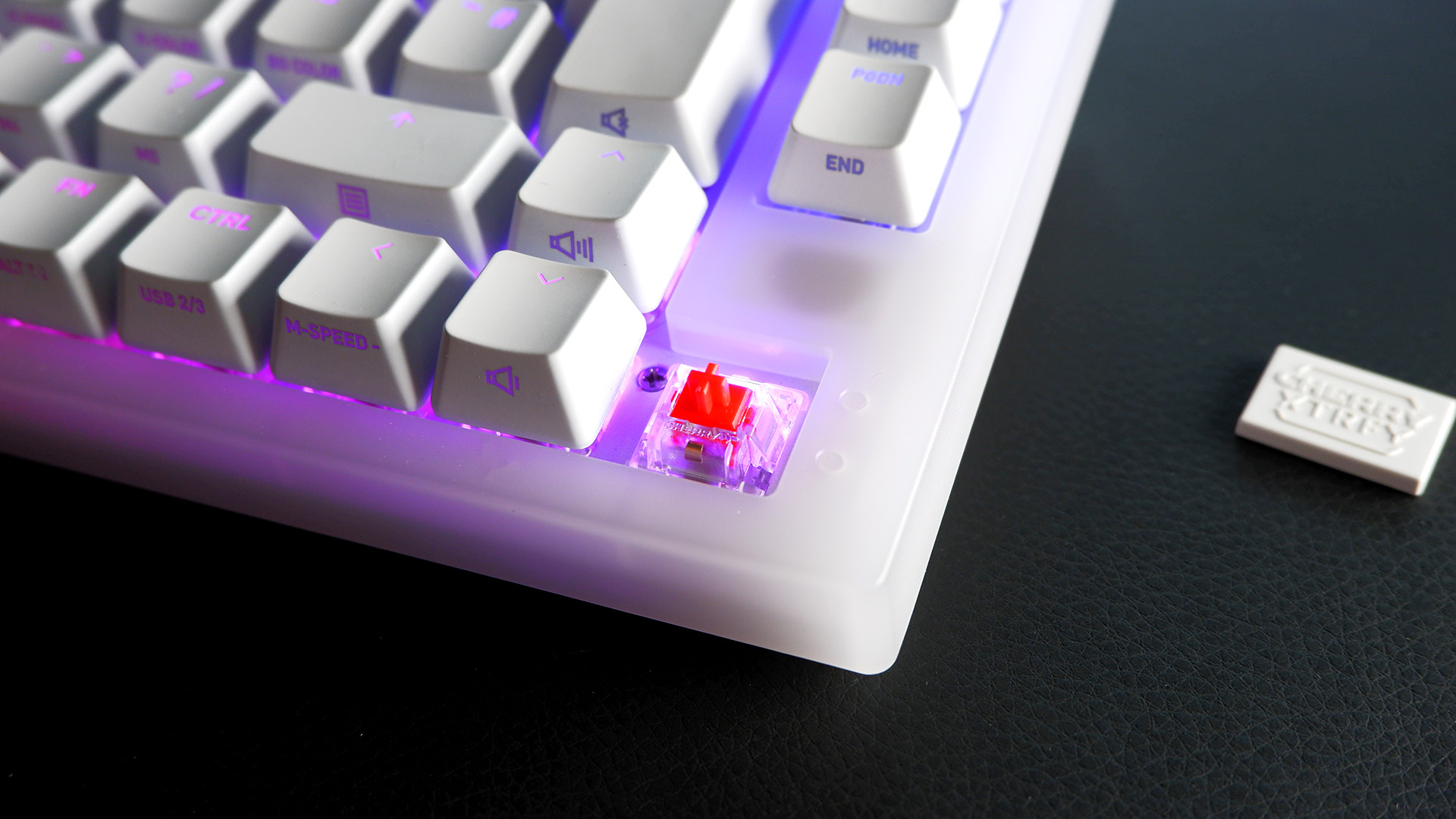
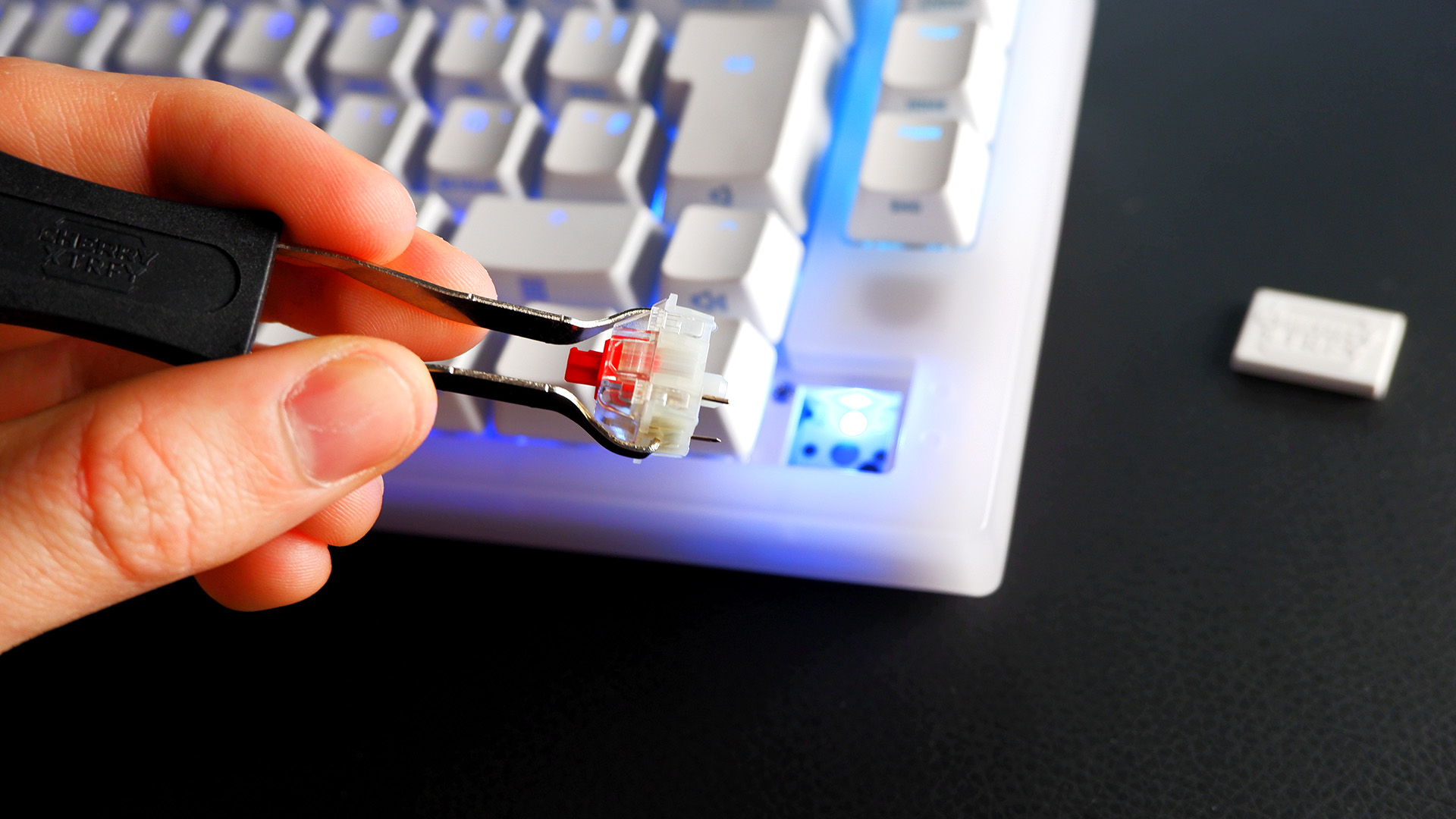

Onwards to the keyboard itself. This is a compact slab with a 65% layout. That means it's only 325 x 112 mm and doesn't come with a numpad or the usual cluster above the arrow keys. It does retain arrow keys, however, along with Page Down, Page Up, and Delete keys. The rest of the missing keys can be accessed via the many, many shortcuts on this keyboard.
Keep up to date with the most important stories and the best deals, as picked by the PC Gamer team.
End, Home, and the F1 – F12 keys are accessed with a press of the Function key. To make up for the lack of physical media keys there are some shortcuts thrown in along the top alphabet row. All pretty sensible shortcuts for any compact keyboard. There are also shortcuts for moving and using the mouse, which are less common but could come in handy.


What I find a little overwhelming are the many more shortcut keys for functions with unclear intentions. There's one key of mysterious machination with a fingerprint blazoned on it, another says K-LED. BG Color, K-Slow, K-Fast, K-Mask, E-speed+ … the list goes on. All those I've just mentioned control the RGB lighting on the board, and the reason why there are so many pre-programmed keys to do so is due to the lack of dedicated Cherry software to control this keyboard. That may appeal to some, though if you're looking for simplicity then I'd look elsewhere.
Programming the RGB lighting is a process of trial and error. You hold down one key, hit another, and maybe the key you're holding changes in colour. That means you're changing the overall lighting mode, probably, it might also mean you're changing the colour the keys light up as you type. I'm yet to entirely suss it out. The instruction manual loosely explains which key does what, but doesn't explain how exactly they all work together. After trying to change a static colour on a handful of keys, I ended up settling on one of the preset lighting modes instead.
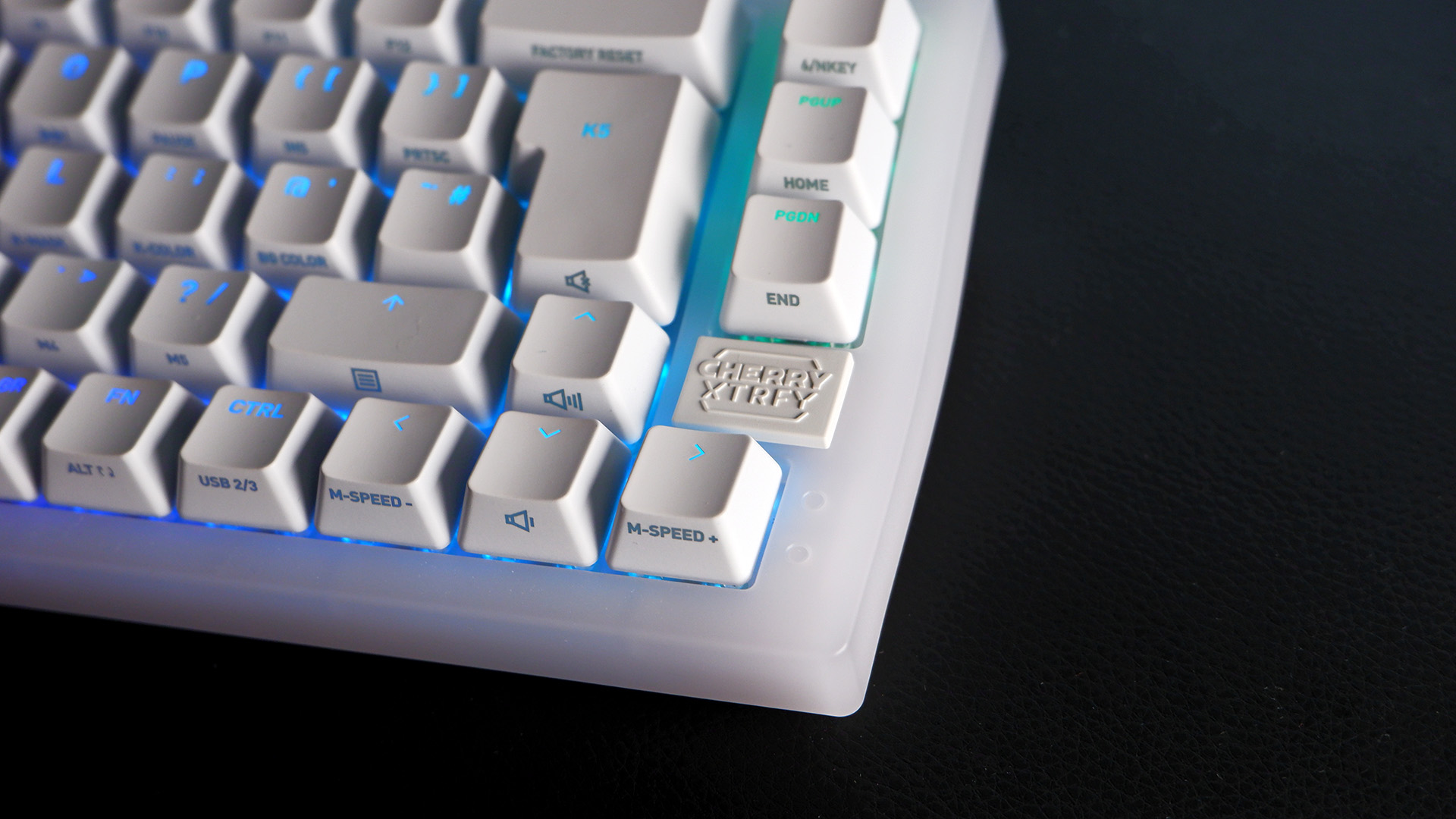
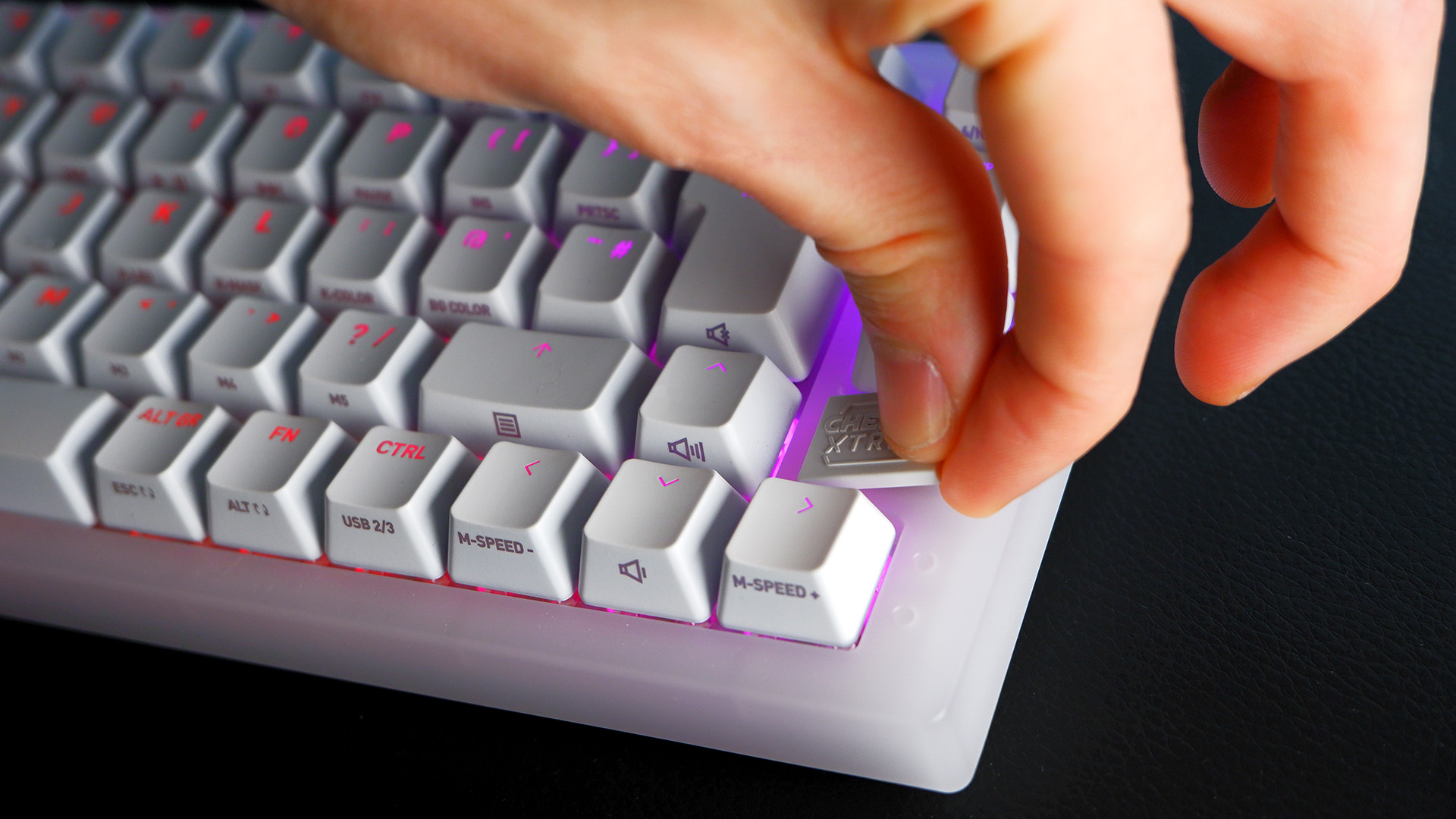
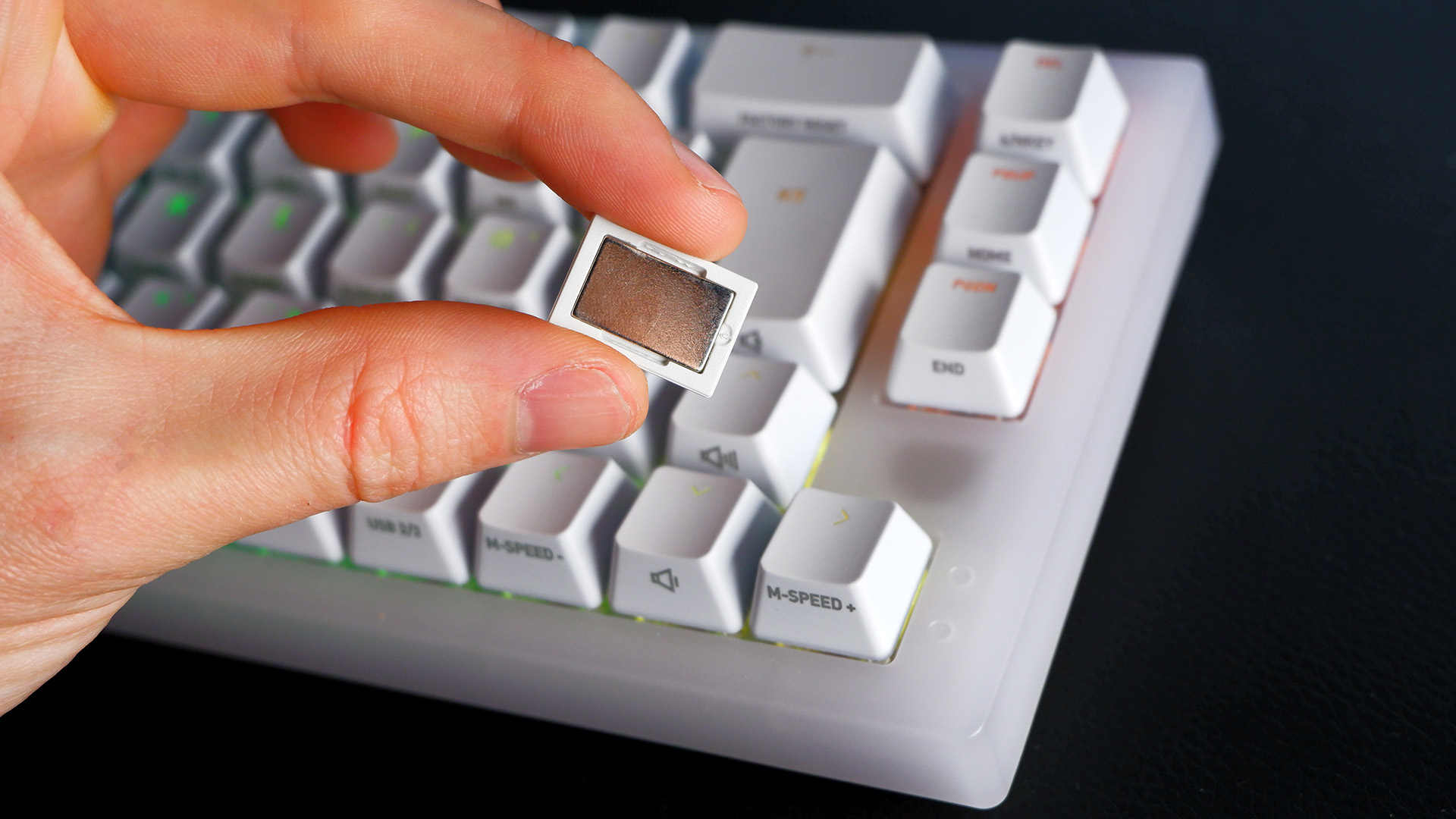
✅ You don't want another piece of lighting software on your PC: Forget the proprietary apps to control RGB lighting across your peripherals, the Cherry Xtrfy K5V2 takes care of all that with some keyboard shortcuts. Though the learning curve is a lil' steep.
✅ You love a Cherry MX Red switch and you want more of the same: Like the Red switch you know only materially better. That's the MXA2 Red switch included in the Xtrfy K5V2.
❌ You don't mind some software: The onboard controls are fine, but they're a bit clumsy compared to the full control available via an app.
❌ You need a cheap compact mechanical keyboard: There are plenty of wired compact keyboards of a similar size for a lot less money than this, but you won't get the newer Cherry switches inside just yet.
There are a few other things to consider with this keyboard. For one, how long it's taken me to comment on the translucent housing. Don't be fooled by its mushy looking exterior, this thing is built like a tank and I couldn't get it to flex one bit. And I'm really strong. It does seem a bit odd to have a case designed so favourably towards outlandish RGB lighting on a keyboard that is also meant to appeal to the naturally software-sceptic among us. Those things don't often mix. But it may appeal to a niche audience, and there's always the less pronounced black option. Oh, there's also a strangely magnetic removable logo above the arrow keys, which I assume is so you can 3D print your own replacement.
The keycaps are made from ABS plastic, which feels like a bit of a miss for the money, but they're easily replaceable thanks to MX cross stems. The switches themselves are also hot-swappable and the USB Type-C to Type-A cable removable. All of which should see this keyboard last a long time—at least until those switches wear out around the 100 millionth click mark.
You'll have to part with $140/£139/€139 to get yourself in on the Xtrfy action. That's cheaper than the ROG Falchion RX Low-Profile I recently reviewed, which is a similarly compact board, though the Xtrfy has left less of an impression on me. It's a neatly packaged gaming keyboard with plenty of functionality for its lack of software, which for some may be all they need to hear, but it nevertheless feels a lot of money for fewer keys than most.
Cherry's new switch is a marked improvement over its extremely popular and widespread predecessor, and the Xtrfy K5V2 keyboard is a lavishly lit and sturdy home for them. Though there are nicer feeling, and cheaper, compact keyboards on the market. Nothing about the Xtrfy makes it sing for me.

Jacob earned his first byline writing for his own tech blog, before graduating into breaking things professionally at PCGamesN. Now he's managing editor of the hardware team at PC Gamer, and you'll usually find him testing the latest components or building a gaming PC.
